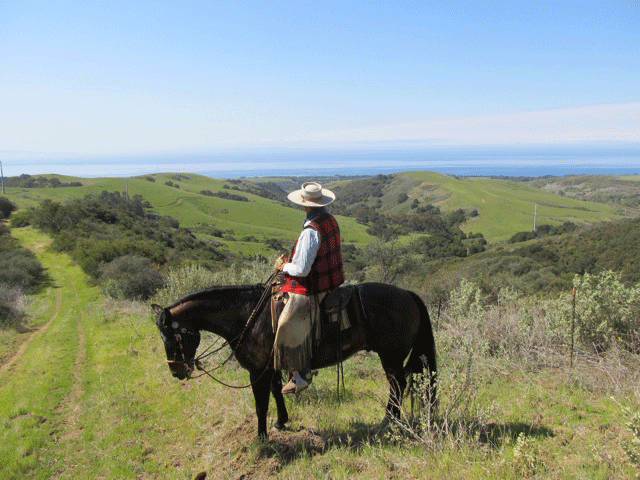A Little About Me:
From the time I was 13 years old and read Ed Connell's "Reinsman of the West" I fell in love with the California method of horsemanship. After getting out of school I started pursuing my cowboy dreams by getting hired on any big outfit that would take me on, never caring what the pay or job entailed.
I was fortunate and got to work with some really good hands. I tried to learn from whoever I was around and try as many methods as I could to find out what worked best for me.
““I do not believe that I possess any special talent other then experience though, experience gained through trial and error.”
”l still make mistakes and miscalculations that is how we learn. If you are honest with your horses, really trying to do the best for them they will forgive any transgression. One nice thing about starting the journey into spade bit horses now is that there are people out there that are willing to help something that was not available to a lot of us.”
”
I found over time I could get by most horses pretty fair and was willing so I ended up riding a lot of colts and horses that other people couldn't get along with. By doing this I spent a lot of time over my head, but it was sink or swim and I survived it.
After 20 years of being a full time buckaroo//cowboy I became disenchanted with the way things were going on the ranches, it seemed as the pride was lost and a lot of the new guys didn't have the passion for anymore, it was just another job to them.
Through circumstances in my own life I got out of being tied to the ranch and tried to follow my own path. I had always thought that with my experience with horses, if I could get a little place to work out of I could make it.
It was harder than I thought it would be and I ended up doing many things to make ends meet, I dealt cards and dice in a casino, built trusses, sold horse trailers, was an outrider on the track and did about any job I could to keep my horse habit alive.
I did end up making it as a colt starter and was able to start a lot of colts of every type you can imagine and they were very good teachers.
I also ended up getting to show a few horses and that started me down another path.
I was starting to think I was going to finally get to be a real California style bridleman, but soon learned that what it takes to win in the show pen is not exactly what I wanted from my life either, it wasn't consistent to the old ways and it made me feel bad about myself, no matter how well I did it made me feel bad about how I got there.
Through chance and good fortune (meeting my wife) I ended up in Santa Barbara CA where I shod horses and ended up giving riding lessons.
Through all of this I had always been trying to improve my bridle horse skills and really understand the old Californio method, and now here I was in what was once the bridlehorse Mecca and very few in my area where riding western and those that were did not ride in the Californio style.
I had a few students that were committed to riding so I decided to bring the true old Californio methods back to Santa Barbara and teach only that method.
My new role as teacher forced me to become a better student. I had to have an answer for any question, this in turn made me realize that there were a lot of inconsistencies in the way that I had learned the California system the way that it is most commonly practiced now. I call it the reined cowhorse method.
I decided if I was going to teach the Californio method, I better figure out just how everything worked and how it fit together in the end goal of a bridlehorse.
That is what I have been doing: studying the equipment and riding of the early Californios and trying it out on my horses to see if it is still relevant today.
I can tell you from my own experiences and those of my students that it truly is. These early Californio vaqueros of mostly Indian blood have developed one of the most brilliant and sophisticated systems of handling horses that I have ever seen or read about.
The real proof is in how all horses react to this type of working, without fail they are happier and perform better.
From a person that had become discouraged with my horsemanship to a person that can't wait to get on my horse and ride again, because they are happy and willing, that's what this kind of riding has done for me.
It all comes down to one thing, working from a balance point from there all things can be balanced.
Bruce R. Sandifer


